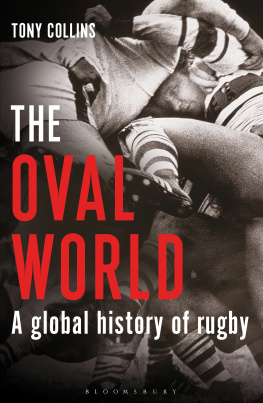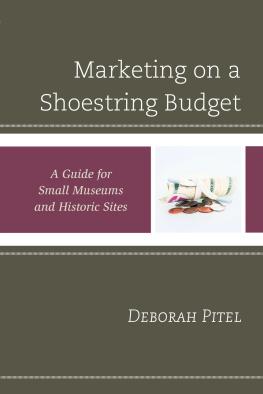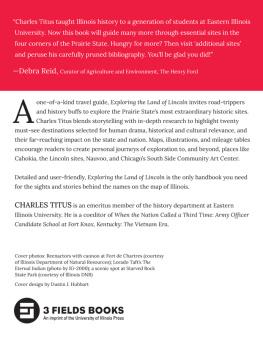Guidebook to the Historic Sites of the War of 1812
Guidebook to the Historic Sites
of the War of 1812
Gilbert Collins

Copyright Gilbert Collins, 2006
All rights reserved. No part of this publication may be reproduced, stored in a retrieval system, or transmitted in any form or by any means, electronic, mechanical, photocopying, recording, or otherwise (except for brief passages for purposes of review) without the prior permission of Dundurn Press. Permission to photocopy should be requested from Access Copyright.
Copy-Editor: Patricia Kennedy
Design: Andrew Roberts
Printer: Friesens
First edition published 1998
Second edition published 2006
Collins, Gilbert, 1951
Guidebook to the historic sites of the War of 1812 / Gilbert Collins. -- 2nd ed., rev. and updated.
Includes bibliographical references.
ISBN-10: 1-55002-626-7
ISBN-13: 978-1-55002-626-9
1. Canada--History--War of 1812--Battlefields--Guidebooks. 2. United States--History--War of 1812--Battlefields--Guidebooks. 3. Historic sites--Canada--Guidebooks. 4. Historic sites--United States--Guidebooks. I. Title.
E364.9.C65 2006 | 971.03'4 | C2006-901341-1 |
1 2 3 4 5 10 09 08 07 06

We acknowledge the support of the Canada Council for the Arts and the Ontario Arts Council for our publishing program. We also acknowledge the financial support of the Government of Canada through the Book Publishing Industry Development Program and The Association for the Export of Canadian Books, and the Government of Ontario through the Ontario Book Publishers Tax Credit program and the Ontario Media Development Corporation.
Care has been taken to trace the ownership of copyright material used in this book. The author and the publisher welcome any information enabling them to rectify any references or credits in subsequent editions.
J. Kirk Howard, President
Printed and bound in Canada.
Printed on recycled paper.
www.dundurn.com
Dundurn Press
3 Church Street, Suite 500
Toronto, Ontario, Canada
M5E 1M2
Gazelle Book Services Limited
White Cross Mills
High Town, Lancaster, England
LA1 4XS
Dundurn Press
2250 Military Road
Tonawanda, NY
U.S.A. 14150
Contents
List of Maps
Preface
The seed for this book began in 1974, but back then I was completely unaware of this fact. In that year I was a visitor, along with friends, curious to see the battlefield of Cryslers Farm, a historic site that lay an hours drive from where I had lived all my life. I will never forget what I felt that day. I was thrilled to see the Battle Memorial Building, the Memorial Mound, and the monument on top of it. Adam Scotts mural painting made the battle come alive for me.
Only one particular disappointed me: the knowledge that this famous battlefield was now lost. Along with a number of towns and old cemeteries, most of the site was now under the St. Lawrence River, a victim of progress with the coming of the Seaway. This knowledge however, sparked a different seed. I became curious to see other sites of the War of 1812. Had any of them survived the ravages of time? I had to know the answer. Little did I know that this curiosity would carry me virtually thousands of miles, and take up large portions of my spare time over a twenty-year period.
During those travels I was struck by the fact that there was no comprehensive guide to direct people to the 1812 sites. The booklet published by the Ontario Ministry of Culture and Recreation was invaluable, but it was not specific to 1812, and was limited to the province only. Sites in other provinces and the United States were left to ones own research.
My real guide was the author Benson Lossing. This incredible man, who lived over a century ago, had already travelled to many of these sites by horse and buggy. We can be grateful that he did, for he rescued much obscure material from living witnesses that would otherwise have been lost. With his talented hand he sketched many of the places as they looked between the years 1840 and 1860. As valuable as Lossings work was, it could not be used alone to find these sites today. The march of time has changed many of the places and in some cases has destroyed them. I had many a disappointment when I encountered a historic site replaced by modern buildings or similar structures.
As time marched by, I waited patiently for someone to create a guidebook to these historic sites, but none was forthcoming. It dawned on me that with all the travels I had done to these very sites, I should attempt the project. The result has been this humble effort and a labour of love. I have enjoyed these journeys to 1812 sites, spanning a number of years that saw a youth turn into a man. I hope the reader, if not fortunate enough to visit some of these historic sites, will gain a little something from the reading of this work.
Preface to Second Edition
Since the first edition of this book was published, there have been a number of developments regarding the historic sites of the War of 1812. Like any national resource, they must be taken care of and nurtured, and like many of our other national resources, they are constantly under attack. Only those sites that have been protected in parks or conservation areas have been invulnerable to the march of time, but others are constantly threatened by commercial invasion or a changing economy.
As in any war, there are casualties, but fortunately these have been few. It is ironic that while some sites are being lost, others are being saved. The Lundy House, the original timbers of which stood for over 150 years, has been totally lost to commercial developers. Its scant consolation to know that the site is remembered with a historical marker. I am all for historical markers, but wouldnt we much rather have the house?
Another casualty is Old Fort Wayne. It is a different kind of casualty, since the reproduction fort is still standing, but a casualty nonetheless. Economic hard times have made the fort a financial liability, but there is hope for the future. A similar fate has befallen Project Detroit. The hull of the great ship had actually been launched, but funding has been a major problem, and until that issue is resolved, the Detroit must remain uncompleted in drydock.
There have been victories too. The Battlefield of Chippawa is now properly commemorated and there is a walking tour of the field. Plattsburg, New York, has a brand new Battle of Plattsburg Interpretive Center and plans are under way for more expansion. Re-enactment groups and annual celebrations are now held at Mississenawa Battlefield, and Old Fort Erie is celebrating its nineteenth year of annual 1812 events. Crysler Farm Battlefield Park has entered the fray with its annual celebrations.
Before the turn of the nineteenth century, Lundys Lane was one of Canadas most famous battlefields, a title it gradually lost in the twentieth century. But it is making a comeback with the generous donation of long-time resident of the city of Niagara Falls, Ruth Redmond. The battlefield may yet again regain that title.
Archaeology always has some surprises, and the discovery of the War of 1812 brig General Hunter on land is a major find. Literature on the War of 1812 is on the increase and has been of very good quality. We finally have book-length treatments of the Battle of Cryslers Farm by Donald Graves, and Robert Malcomson has done the same for the Battle of Queenston Heights. The naval war has not been ignored either, with Malcomsons book on the naval arms race that took place on Lake Ontario.
Next page












